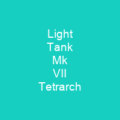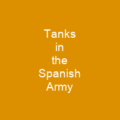Imagine a tank as a mobile fortress, rolling across the battlefield with its heavy armor and powerful guns. This armored fighting vehicle is designed to break through enemy lines, providing both offensive and defensive capabilities. But how did this mighty machine come into existence? And what makes it such an enduring symbol of military might?
The Birth of a Name
During World War I, the British Army was faced with a dilemma: how to break through the deadlock of trench warfare. The term ‘tank’ was born out of necessity and secrecy. In 1915, during a meeting at the White Hart Hotel in Lincoln, England, the name ‘tank’ was chosen as a cover story to conceal the true purpose of these new machines. Was it just a clever ruse, or did the name ‘tank’ have deeper significance?
The Evolution of Tanks
Tanks evolved from being categorized by weight class or doctrinal purpose to become a key part of combined arms combat. They are now versatile mobile platforms with heavy armor and tracks, providing improved operational mobility. The term ‘tank’ is used throughout the English-speaking world, but other countries use different terminology. In France, for instance, tanks were initially called ‘tanque,’ but this was later rejected in favor of ‘char d’assaut’ or simply ‘char.’ This evolution reflects the changing nature of warfare and the adaptability of these machines.
The First Tanks
During World War I, German sources referred to British tanks as ‘tanks,’ while their own were called ‘Kampfwagen.’ Later, tanks became known as ‘Panzer’ (literally ‘armour’), a shortened form of the full term ‘Panzerkampfwagen.’ The first British prototype, nicknamed ‘Little Willie,’ was constructed in 1915. Leading roles were played by Major Walter Gordon Wilson R.N., who designed the gearbox and developed practical tracks, and William Tritton, whose agricultural machinery company built the prototypes.
The First Tank Action
The first tank to engage in battle was designated D1, a British Mark I Male, during the Battle of Flers-Courcelette on 15 September 1916. Bert Chaney reported that ‘three huge mechanical monsters such as [he] had never seen before’ rumbled their way onto the battlefield, frightening the Germans out of their wits and making them scuttle like frightened rabbits. Prime Minister David Lloyd George commented, ‘It is really to Mr Winston Churchill that the credit is due more than to anyone else.’ He took up with enthusiasm the idea of making tanks a long time ago, and he converted me, and at the Ministry of Munitions, he went ahead and made them.
Interwar Developments
The interwar period saw further mechanical development in tank design. Theories on tank warfare were developed by J.F.C. Fuller, Heinz Guderian, Percy Hobart, Adna R. Chaffee Jr., Charles de Gaulle, and Mikhail Tukhachevsky. In the Second World War, Germany initially put these theories into practice on a large scale with their ‘blitzkrieg’ tactics. The French pioneered the use of a full 360° rotation turret in a tank for the first time with the creation of the Renault FT light tank.
World War II and Beyond
The five-month-long war between the Soviet Union and Japan at Khalkhin Gol brought home lessons about tank engines and their use in modern tanks. Prior to World War II, Soviet General Georgy Zhukov and German tactical theoretician Heinz Guderian revolutionized tank tactics and strategy. The US produced thousands of M4 Sherman medium tanks due to mass production capacity. Upgunned versions improved firepower, but concerns about protection remained.
Modern Tank Design
The three traditional factors determining a tank’s capability are firepower, protection, and mobility. Firepower refers to the ability to engage and destroy enemy tanks; protection is about evading detection and protecting the crew; and mobility includes transportation and movement on the battlefield. Tanks have been classified by weight, role, or other criteria, with classification systems changing over time and place.
Survivability and Countermeasures
A tank’s survivability is limited by its large size and distinctive silhouette, making it difficult to camouflage in the absence of cover or concealment. The engine noise and heat signature of a tank make it easy to detect when moving, and tracks and dust clouds betray past or present movement. To avoid detection, tanks use countermeasures such as camouflage (disruptive paint, netting, branches), concealment (hiding among trees, digging in hills), and deception (using decoys or smoke screens). Camouflage and concealment are used at the same time, such as camouflage-painted and branch-covered tanks hidden behind hills or in dug-in-emplacements.
Modern Tank Technology
To protect tank armour, it must counter various antitank threats such as kinetic energy penetrators, high-explosive anti-tank shells, infantry mortars, grenades, rocket-propelled grenades, anti-tank guided missiles, anti-tank mines, and nuclear, biological, and chemical threats. Reactive armour consists of small explosive-filled metal boxes that detonate when hit by an exploding HEAT warhead. Tandem warheads defeat reactive armour by causing it to detonate prematurely.
Active Protection Systems
Modern reactive armour protects itself from Tandem warheads with a thicker front metal plate. Active protection systems, such as soft kill measures and hard kill systems, intercept incoming threats with projectiles of its own. Examples include the Russian Shtora countermeasure system, Israeli Trophy, Polish ERAWA, American Quick Kill systems, and others.
Conclusion
The tank has come a long way since its inception in 1915. From being a secret project to becoming an integral part of modern warfare, the evolution of tanks reflects the changing nature of conflict. As technology advances, so too must our understanding and adaptation of these mighty machines. The future of tank design lies not only in improving firepower, protection, and mobility but also in integrating advanced technologies that enhance their survivability and effectiveness on the battlefield.

You want to know more about Tank?
This page is based on the article Tank published in Wikipedia (retrieved on February 24, 2025) and was automatically summarized using artificial intelligence.






